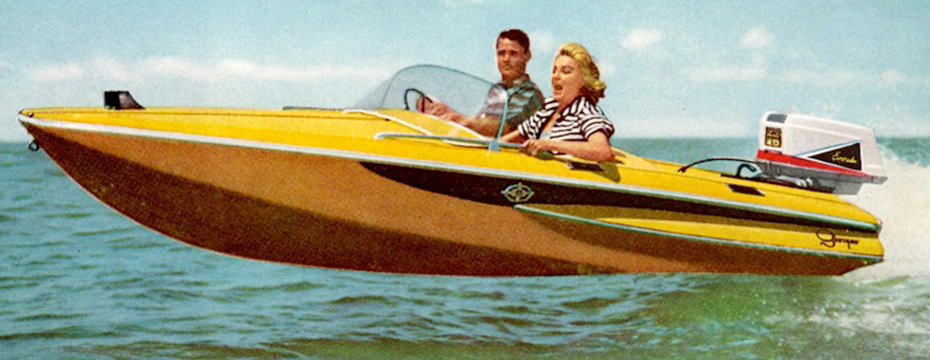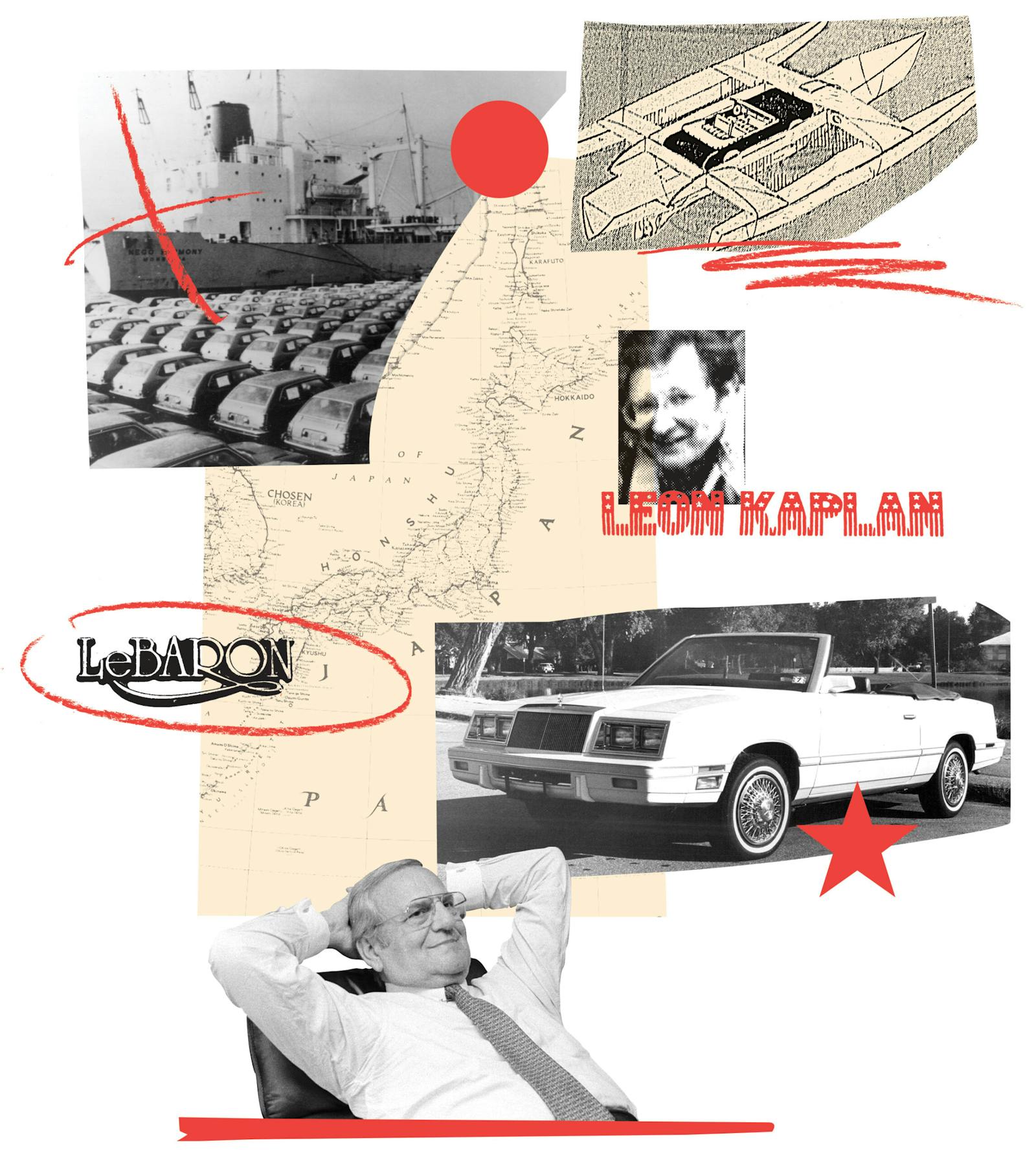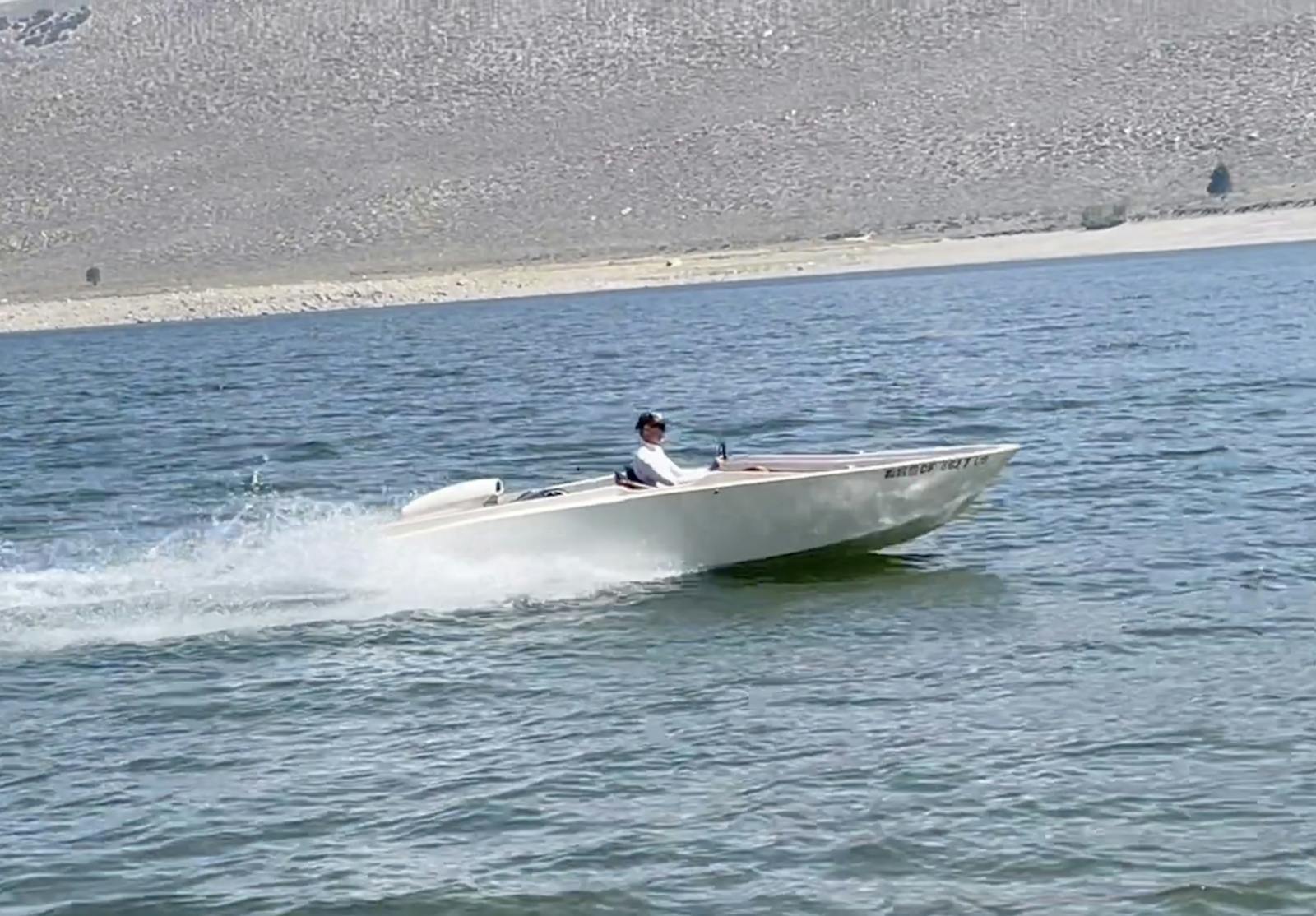For a 15-year-old, freedom meant outboard boating adventures
At 15 years old, I was too young for a driver’s license. So “freedom” was enjoyed via my fast outboard-powered boat. Filling three portable plastic gas tanks (imagine how cheap gas was then!) was all freedom required. That allowed 18 gallons with which to captain my Glasspar G-3 and its “Tower of Power” Mercury Marine outboard. Now for a challenging adventure…
The biggest adventure I could plan at the time was my own version of “The Great Circle Route” a 55-60 mile excursion that would include navigating both the Barnegat Bay and the Atlantic Ocean. From my hometown on the Jersey shore, I would head south on the Bay to Barnegat Inlet, enter the Atlantic Ocean for a ride North of about 25-30 miles, and then return through the Manasquan Inlet to the Point Pleasant Canal and Barnegat Bay. I was planning to conquer this distance in a 13′ 7” fiberglass runabout that only had about 3” of freeboard at rest on its transom!
A bit more about my companion, my G-3. She was possibly the first love of my life, and I still remember her fondly today, decades later. To me she was the speedster of the early ‘60s, with anti-trip chines like an unlimited hydroplane. And like a Corvette, she was fiberglass and had a single cockpit for seating. What 15-year old wouldn’t be in love?
There was a good reason, too, why she was like a Corvette. It was actually in her lineage. Glasspar was an early fiberglass vehicle builder, founded by Bill Tritt in Santa Ana, Calif. Tritt was known for his sports cars – his Glasspar G-2 is in the Smithsonian’s collection. GM’s Design Chief, Harley Earl, even consulted with Tritt, his advice having yielded the Chevy Corvette as we know it. Tripp also designed and built sailboat spars, fiberglass components for Douglas Aircraft and fiberglass boats. Glasspar was popular during the mid-20th century and the G-3 was their hot rod!
Like most G-3s, mine came with a 40 hp outboard, which I upgraded to a 70 hp, and then to an 85 hp six-cylinder Mercury outboard. She was truly all about speed on the water and could outrun any boat on the Bay. She also responded as quickly as I could turn the steering wheel, and allowed me to run past local channel markers as close as I dared in an on-the-water game of chicken.
I felt invincible, which perhaps made me over-confident. That’s why I wasn’t concerned about embarking on this adventure without navigation charts, a compass, a radio or any gauges. (And of course those smartphones we can’t live without today – along with consumer access to GPS – which had yet to be invented.) As long as I had an electric starter on my outboard engine, I had a fully found boating rig and was good to go!
Nonetheless, this was not a completely care-free excursion and some careful planning was required. I strategically embarked on this adventure so I would not be in an outgoing tide once I reached Barnegat Inlet. That current coupled with an unfavorable strong wind would make navigating the already difficult and unruly conditions in that inlet even worse. I also changed my gas tank feeds to a fresh, full tank well before entering the Inlet. Barnegat Inlet has been notorious since 1614 when Dutch settlers named it “Barendegat,” or “Inlet of the Breakers,” due to its shifting channels under strong currents and weather conditions.
As for navigation, I decided that the safest route from the Bay to the Atlantic Ocean was following a local fishing boat. Then I had to keep my bow up. I had a very junior-sized runabout for these waters and the trip I was attempting. Eddies, whirlpools, waves and chop pushed my little boat around. The wriggles and shivers that they would play on my Glasspar were something I could handle as long as the bow pointed skyward.
Once through the Barnegat Inlet and into the Atlantic Ocean, my journey was a cakewalk. Surprisingly, the ocean stretch was not challenging and the north and south jetties made my return trip back via the Manasquan Inlet into the Bay like a cruise on a calm lake. My sense of accomplishment was great, even though I was disappointed realizing that the most exciting and fun part of the trip was already well behind me.


